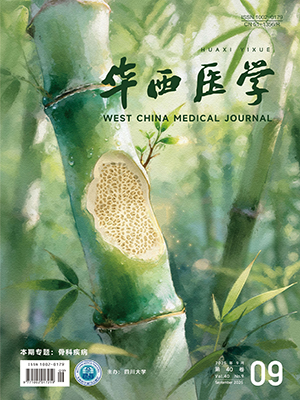【摘要】 目的 了解甲型H1N1流感发热病区门诊就诊高峰期患者焦虑状况及相关因素,采取针对性护理措施减轻患者焦虑情绪。 方法 2009年11月上旬-12月上旬采用一般资料调查和Zung′s焦虑自评量表(SAS)对219例患者进行调查分析。 结果 219例患者SAS平均分为(33.70±8.60)分,其中17例SAS总分≥50分,存在焦虑情绪,发生率7.76%。多元回归分析结果显示,在年龄、性别、城乡差异、发热程度等因素中,与焦虑症状有关的主要因素为年龄和发热程度。 结论 甲型H1N1流感发热病区门诊就诊高峰期患者焦虑情绪明显高于常模,应引起重视,在门诊工作中加强心理护理,减轻和尽力消除患者的焦虑情绪,以免对病情产生不利影响,不利于控制流感疫情。
【Abstract】 Objective To investigate the anxiety status and related factors of H1N1 patients at influenza peak of fever clinics,and to take specific measures to reduce anxiety in patients. Methods The general information and Zung′s self rating anxiety scale (SAS) were taken to analyze 219 patients from early November to early December 2009. Results The average SAS score of the 219 patients was 33.70±8.60, in which there were 17 patients (7.76%) with total scores ≥ 50 and anxiety. Multiple regression analysis showed that the age and temperature were related factors among age, gender, urban-rural differences, and fever. Conclusion The survey suggests that the pafients at the H1N1 influenza peak of fever clinics are significantly more anxious than normal anxiety. Out-patient work should strengthen psychological care to reduce and try to eliminate the anxiety of patients, in order to avoid adverse impact which is not conducive to control influenza outbreaks.
Citation: REN Jing,ZOU Liqun. The Anxiety Status and Related Factors of H1N1 Patients at the Influenza Peak of Fever Clinics. West China Medical Journal, 2010, 25(11): 2073-2075. doi: Copy
Copyright © the editorial department of West China Medical Journal of West China Medical Publisher. All rights reserved




